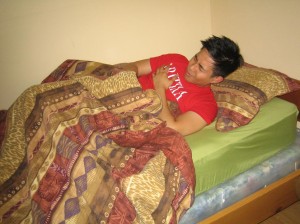The rib cage is comprised of bone and cartilage which is a strong tissue that is elastic than bone. The cartilage that is connected to the front part of the ribs allows chest expansion while moving and breathing. Both the ribs and the associated pieces of cartilage have diminished flexibility.
Trauma or overstretching the junction in between the bones and cartilage of the rib cage can result to a tear. The pain is the characteristic symptom of a torn rib cartilage. It is important to seek medical care if a torn rib cartilage is suspected due to the possibility of additional damage to the rib cage and other internal organs.
Localized pain
The torn rib cartilage can cause a lot of pain. The piercing pain usually occurs right away at the site of the tear. The ongoing pain can last for weeks up to months depending on the severity of the injury.

The doctor might recommend an over-the-counter or prescription pain medication to minimize the discomfort caused by the torn rib cartilage. During the initial days after the injury, the application of an ice pack must be done every 3-4 hours to minimize the pain. After 72 hours, a heat pack can be applied for 15-20 minutes every few hours to promote the healing process by increasing the flow of blood in the affected area.
Discomfort during movement
The diaphragm is the main muscle that is utilized for breathing which attaches to the lower ribs. As a consequence, simple movements such as coughing, breathing or sneezing can trigger pain due to a torn rib cartilage. Other daily movements that involve expansion or twisting of the rib cage can also instigate pain.
Hold a pillow against the chest can make these movements less painful. The doctor might recommend setting up an appointment with a physical therapist. A physical therapist can provide instructions on how to move and steadily resume normal activity without aggravating the symptoms.
What are the other symptoms?
Always bear in mind that bruising is likely to occur in the affected area if a torn rib cartilage was caused by a forceful blow to the chest. The swelling is likely to occur at the site of injury. In most cases, there is popping, clicking or grinding at the site of the tear, particularly when the individual takes a deep breath. The breathing can be slightly shallow than normal as the individual instinctively attempts to reduce the pain by avoiding deep breathing.
Important considerations to bear in mind
Any form of injury to the rib cage is considered serious, thus it is vital to consult a doctor if the individual sustained any rib-related injury. Remember that multiple ribs might be involved which endangers the ability to breathe.
It is vital to schedule an appointment with a doctor to ensure that the internal organs were not damaged. In addition, heart diseases can also cause chest pain similar to one that is linked with a torn rib cartilage. In such cases, it is best to seek immediate medical care if the individual experiences difficulty breathing or chest pain that is not linked to any injury, particularly if it occurs along with nausea, sweating, dizziness and jaw or arm pain.
